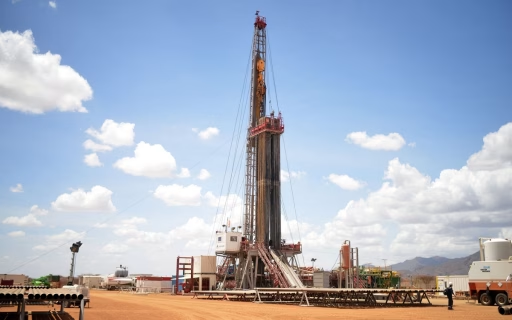Kenya has revived dreams to produce oil. This is after the Kenyan government finally gave a green light to the South Lokichar Basin Field Development Plan (FDP).
According to the Energy and Petroleum CS, Opiyo Wandayi, this move marks a historic point in the country’s drive to set up a modern, competitive, first-world economy.
South Lokichar Basin Field Factsheet
Project Type: Onshore Oil Field Development
Location: Turkana County, North-Western Kenya
Initial discovery: 2012 (Ngamia-1 well)
“Today, I signed the instruments required for submission of the approved FDP to Parliament for ratification. This is in accordance with Article 71 of the Constitution and Section 31 of the Petroleum Act (Cap. 308),” he said at a press conference in Nairobi.
This is the first time an FDP has advanced to this level. Therefore this signals the country’s shift from exploration to development and, soon, to commercial production.
Challenges Facing the Development
The process had been delayed for over a more than ten years. This therefore prompted various partners in the oil project to exit. In April this year, Tullow Oil PLC agreed to sell its entire Kenyan portfolio to Gulf Energy Ltd for a minimum consideration of $120 million. This therefore made the company to effectively exit project that had faced years of regulatory delays, partner withdrawals, and investment uncertainty.
Furthermore, the FDP was submitted to the Energy and Petroleum Regulatory Authority (EPRA) by Gulf Energy E&P BV (GE) which is a Kenyan investor licensed to develop Block T6 and Block T7 in the Tertiary Rift Basin.
It outlines how six discoveries within the development area will be fully developed. This is alongside further appraisal and exploration aimed at maximising resource recovery.
Phased Development
The strategy follows a phased approach. The phased approach is expected to begin with the largest and most technically mature reservoirs. Additionally, the total investment that is required to fully develop the six discoveries is approximately $6.1 billion (Sh793 billion), with a best-estimate recovery of 326 million stock-tank barrels over the 25-year contract period.
Phase 1 of the project is expected to produce 20,000 barrels of oil per day. Also, it is expected to rise to 50,000 barrels per day under Phase 2.

Timelines
According to the contractor, they expect to deliver first oil by December 2026 and full ramp-up by 2032.
“This development will generate benefits felt both nationally and locally. It will create jobs, open opportunities for local suppliers, stimulate new enterprises, and support long-term economic activity,” Wandayi said.
For Northern Kenya, more so Turkana and West Pokot, the project will help improve infrastructure, attract additional investment, and support local priorities through revenue-sharing arrangements.
Benefits of the Development
Communities will benefit directly from the project through employment opportunities , procurement opportunities, skills, development, and social investments.
As for the national level, the South Lokichar Development strengthens the foundation of a future first-world economy by diversifying Kenya’s economic base. Also, it improves the balance of payments, and positions Kenya as a predictable and attractive destination for global capital.
Additionally, it will build new technical competencies in petroleum engineering, operations and logistics, and capabilities that contribute to long-term national competitiveness.
“Successful execution of this project will signal to the world that Kenya is ready for large-scale, high-value industrial investments.”
Significance
This project stands as the single most significant private sector-driven upstream petroleum investment in recent times.
It is a milestone that moves the country closer to unlocking its broader petroleum potential and reinforces our ambition to build a resilient, innovation-driven, and opportunity-rich economy.
Related Projects
Kenya is gearing up its oil infrastructure, emerging as a competitor in the East and Central Africa market. Kenya is also expected to develop the Kenya-Uganda pipeline that will transport oil to Uganda. Additionally, Countries such as Tanzania and Uganda are co-developing the East African Crude Oil Pipeline (EACOP) which will be the world’s longest heated pipeline once completed.

